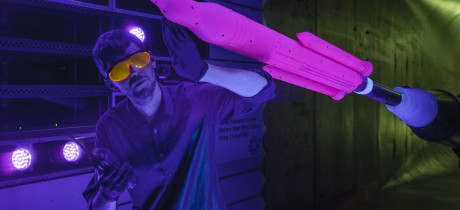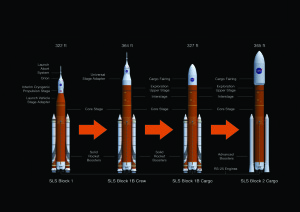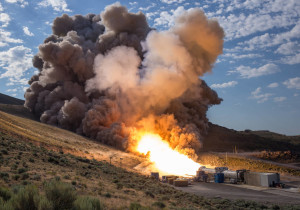Before enabling exciting future deep space missions, America’s new rocket is undergoing some important tests around the country.
Space Launch System (SLS), is powerful, evolvable, and will enable increasingly complex missions. At 322 feet tall, the first configuration of SLS will launch in 2018 on Exploration Mission-1 (EM-1). With upcoming versions of the launch vehicle enabling more ambitious missions, SLS is vital to our future in deep space.
Credits: NASA/MSFC
How will the next SLS rocket behave as it accelerates past the speed of sound? To find out, engineers are testing models of the crew and cargo configurations of the rocket inside wind tunnels. Hundreds of wind tunnel tests are being conducted at NASA centers in both Virginia at Langley Research Center and California at Ames Research Center. Data from these tests are essential in refining the launch vehicle’s design in addition to its guidance and control systems.
With the first configuration of the launch vehicle able to lift 70 metric tons, there’s nothing little about it. Except when you compare it to the second generation of SLS that will be taller than the rocket that launched humans to the moon, the Saturn V. This second generation will be able to lift 105 metric tons and will feature an exploration upper stage.
When the next generation of SLS separates from its solid rocket boosters during flight, it will be traveling at more than four times the speed of sound. What does it look like when just one of the two boosters fire? The image below taken during the second and final booster qualification test in Utah this past June.
Image Credit: NASA/Bill Ingalls
How will wind tunnel tests help SLS stay on course as it flies through transonic speeds? The tests at Ames verify that the autopilot will communicate to the rocket’s nozzles, keeping it on track.
At Langley, recent tests evaluated how the rocket’s cargo version would behave flying just under the speed of sound and then passing into supersonic speeds. Shock waves that build up around SLS can cause vibration and unsteady loads among other effects, so it’s important to know how SLS will respond. More tests later this year will evaluate the rocket at subsonic and higher Mach numbers.
Why are the wind tunnel tests essential? They provide information about the shock waves that SLS will experience – information that is difficult to find using computational fluid dynamics.
Up next will be tests at Langley concerning the separation of the rocket’s solid rocket boosters and its liftoff transition. Testing will also occur at a special wind tunnel with NASA engineers and CUBRC Inc. evaluating how the rocket heats up during its ascent.
With new test techniques being developed through wind tunnel testing of SLS, Ames is developing a way to observe the strength of aerodynamic forces on different parts of the rocket using unsteady pressure-sensitive paint.
The paint applied on the model isn’t your everyday house paint – it glows brighter or dimmer based on the air pressure.
Image Credits: NASA/Ames/Dominic Hart
With tests continuing this year and the first launch of the rocket scheduled for next year, Space Launch System is well on its way to equipping the nation with the capability to launch increasingly ambitious missions into deep space.
To learn more about the rocket, visit NASA.gov.




